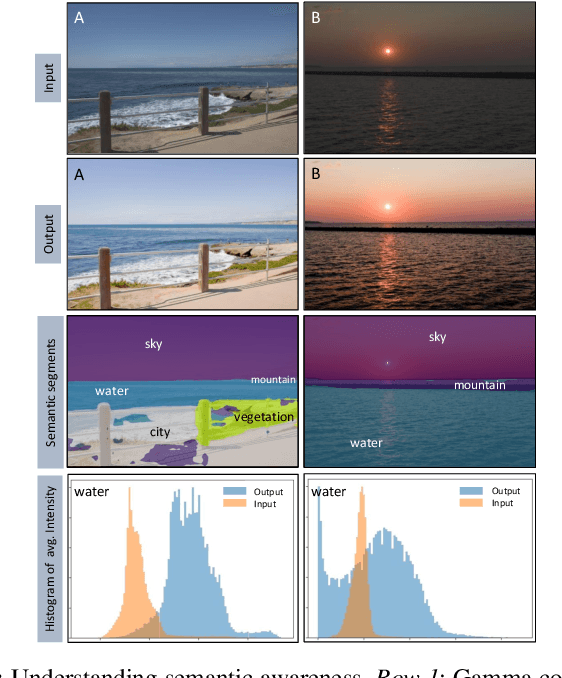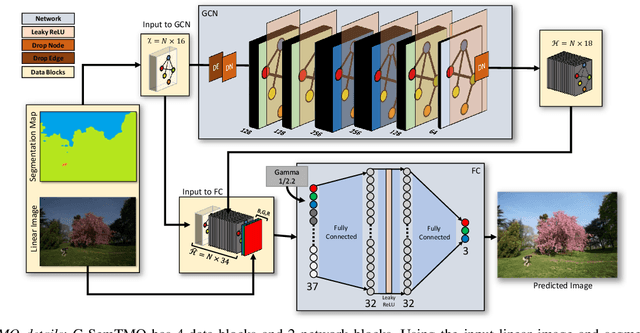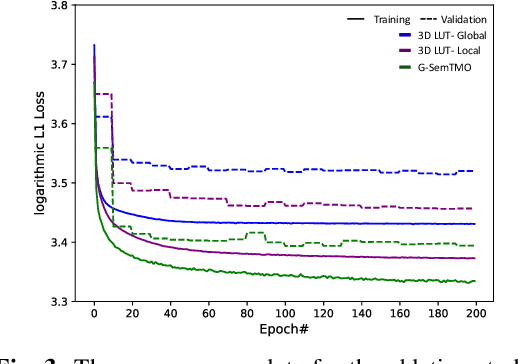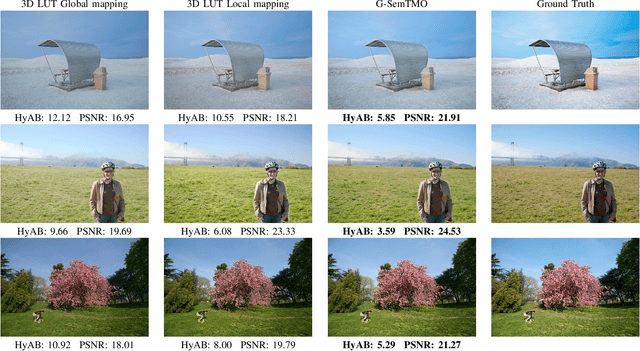G-SemTMO: Tone Mapping with a Trainable Semantic Graph
Paper and Code
Aug 30, 2022



A Tone Mapping Operator (TMO) is required to render images with a High Dynamic Range (HDR) on media with limited dynamic capabilities. TMOs compress the dynamic range with the aim of preserving the visually perceptual cues of the scene. Previous literature has established the benefits of TMOs being semantic aware, understanding the content in the scene to preserve the cues better. Expert photographers analyze the semantic and the contextual information of a scene and decide tonal transformations or local luminance adjustments. This process can be considered a manual analogy to tone mapping. In this work, we draw inspiration from an expert photographer's approach and present a Graph-based Semantic-aware Tone Mapping Operator, G-SemTMO. We leverage semantic information as well as the contextual information of the scene in the form of a graph capturing the spatial arrangements of its semantic segments. Using Graph Convolutional Network (GCN), we predict intermediate parameters called Semantic Hints and use these parameters to apply tonal adjustments locally to different semantic segments in the image. In addition, we also introduce LocHDR, a dataset of 781 HDR images tone mapped manually by an expert photo-retoucher with local tonal enhancements. We conduct ablation studies to show that our approach, G-SemTMO\footnote{Code and dataset to be published with the final version of the manuscript}, can learn both global and local tonal transformations from a pair of input linear and manually retouched images by leveraging the semantic graphs and produce better results than both classical and learning based TMOs. We also conduct ablation experiments to validate the advantage of using GCN.
 Add to Chrome
Add to Chrome Add to Firefox
Add to Firefox Add to Edge
Add to Edge